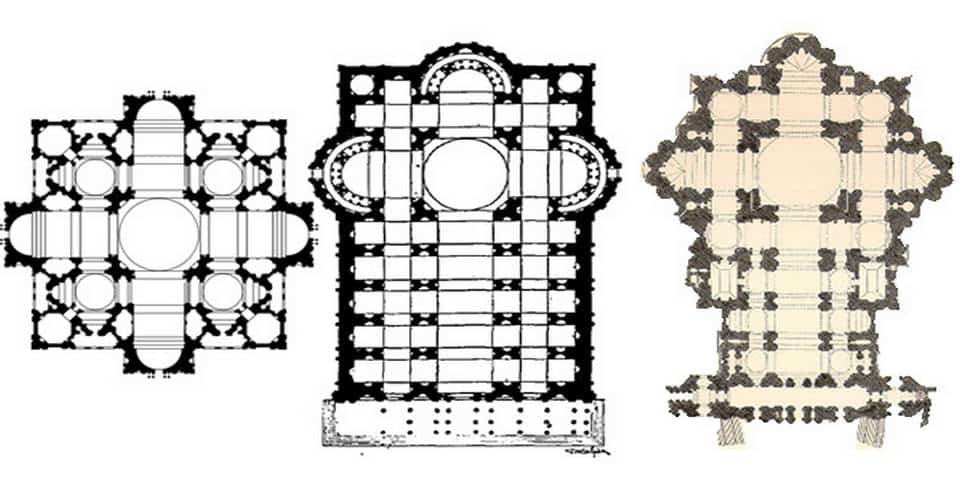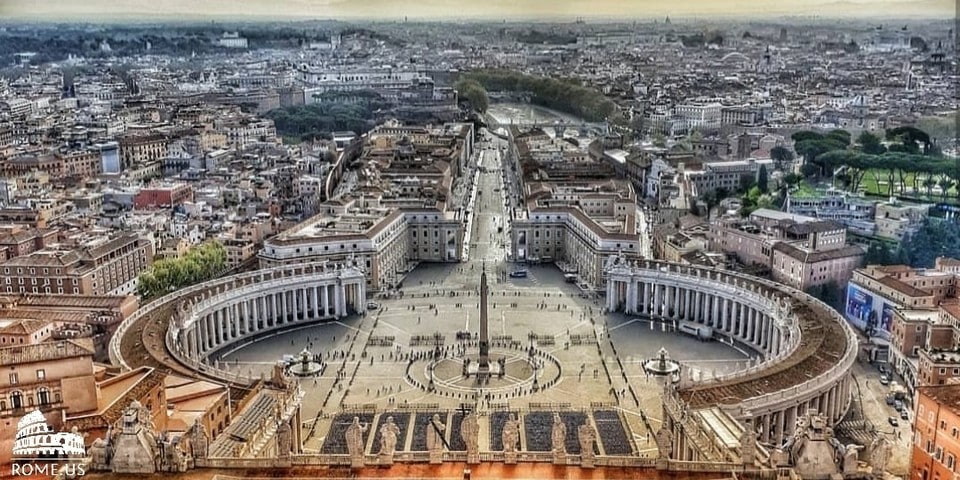The inside was extraordinary. There were two pipe organs.


Ceiling:

Ceiling:

The building process became in 1506, but between 1513 and 1514 both Pope Julius II and Bramante died, leaving the construction with 4 enormous pillars for the dome support. The next pontiff, Leo X, commissioned Raphael to continue the project, but the young artist died at the age of 37, and his project wasn’t realized. Importantly, Raphael’s Basilica was to have a Latin-cross shape with interior features composed of the play between light and shadow.Bramante came up with an idea to build a Greek-cross structure, towered over by a large central dome, instead of the classic Latin-cross church with 5 naves

Michelangelo was inspired by the cupola of the Duomo of Florence and the Pantheon, designed by Brunelleschi. When he died, the new Basilica missed the corner chapels, the façade, and the cupola, of which only the columns and drum had been finished. In 1587, Giacomo Della Porta became responsible for completing the dome with his assistant, Domenico Fontana. After two years of work, the cupola was finally completed.The maximum height of the cupola is 133.3 m from the ground level, the height inside the basilica is 117.57 m, while the inner diameter is 41.5 m. Also, the total weight is 14 thousand tons
Back to the story. Upon exiting the San Pietro metro station there were already crowds heading to the Vatican. We heard that because of the Pope's death that the Museums would be closed today. Hearing that, we changed our plans and decided to head straight to St. Peters. The city of Rome knows how to handle crowds visiting the Vatican. This map shows the path from the metro to St, Peters as a blue line. Barriers and police showed up a couple of blocks from the metro and got tighter and more controlling the closer we got to the Square (#3). We reached the square about 8:30. Ten minutes later we were a few yards from the doors. My phone rang. It was our "guide" who had our skip the line to get us into the Vatican Museums. They were not closed. Where were we? We had timed tickets for 9:00. The entrance to the museum was not close. See the red X on the map. The red line shows the shortest path to the entrance from the square. The path runs along one of the high walls that surround the Vatican. The line to get into the Vatican museums follows that same wall and at 8:45 AM that day, the end of the line was already at the square. We raced (for me not too fast) all the way to the entrance and used our phones and selfies to find our guide among the hugely crowded entrance area. We were late, but our guide got us in the door, through security and into the museum. She then left to meet her next set of clients.On Monday April 21 our plan was to go the the Vatican Museum, Sistine Chapel and St. Peter's Cathedral. We were up early to take the metro to the Vatican and use our skip the line tickets to get in the Museum at 9:00 AM. By the time we were reached the Metro the news was out that the Pope had died. We had no idea what that would mean for our plans. We headed to Vatican City.

Hmmm...Maybe WH40k sprang from the history of Rome? One did come before the other by a few centuries IIRC.The count displacing the power of the local clerical magistrates did not really happen in Rome the same way it did in many other parts of Europe, probably because the Franks never ruled Rome directly.
It sorta leaves Rome feeling like this deeply weird, exceptional place. I can see the remnants of the city state that defeated the Latin League and became a hegemony, which celebrated triumph over its foes with gladiatorial combat and ritual execution of rival leaders surrounded by big time Saturnalia. And from that collapse springs up this religious institution securing wealth and power far beyond its actual military reach simply by leveraging symbolism of the past into a more limited form of leadership in a religious sphere. Made Augustus' man Agrippa's big building into a church.
Both feel cult-y to me. Really make Rome its unique animal. It's like something out of WH40k to me. Really interesting art but the history and social themes behind its production I personally find pretty dark commentary.


For the western world you might be right. I'm not sure it applies once Asia is brought into the picture.If there was a center of the world it would be Rome IMO.
Funny there is a railway station in the Vatican. Is it still in service?
You can see clearly four twisted columns that date to the second century. Peter tomb is thought to be under the small canopy held up by the four columns. the Pope's body is jsut to the right.The small shrine that supposedly held the bones of Saint Peter was topped by a canopy with 4 twisted columns from the 2nd century. Twelve more of these columns surrounded the tomb. I'll come back to this.

